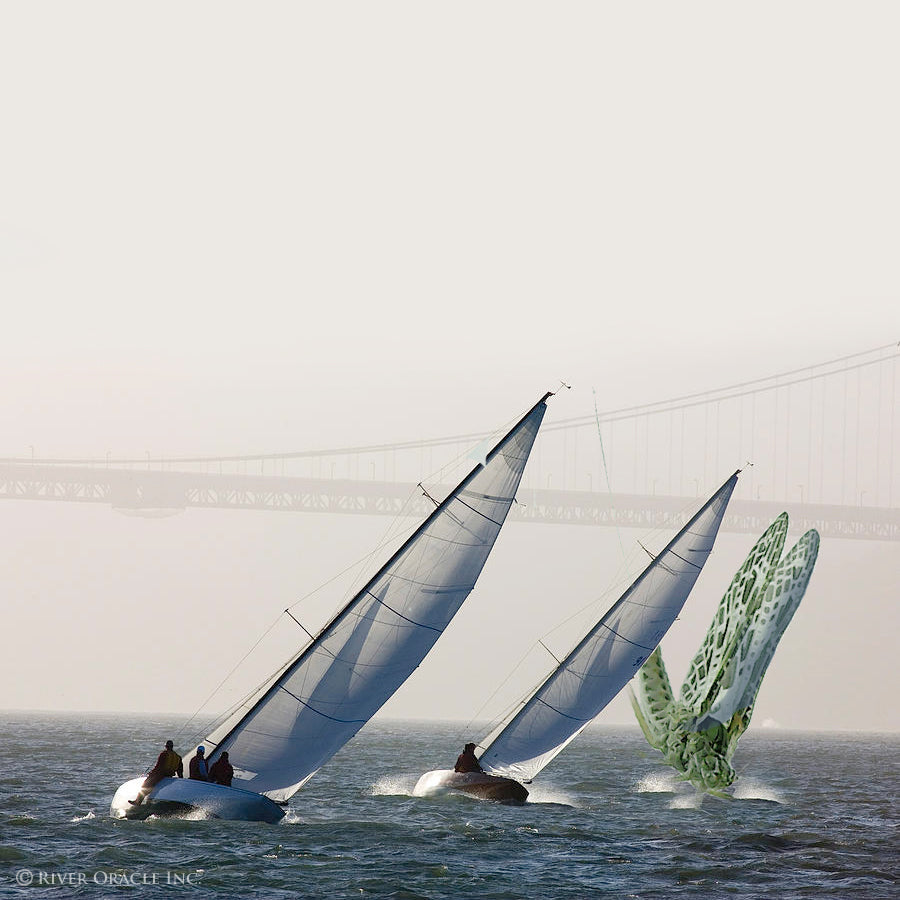
How to Match Dry Flies from a Distance

Knowledge is power, and in the case of the fly fisher, the greater your ability to identify the insects that trout feed on and choose the correct fly pattern, the more successful you will be on the water. The adult, or dry life cycle, of aquatic insects is brief. Mayflies will spend 6-12 months on the bottom of the lake or river as a nymph, and only 4 - 48 hours flying and floating out of the water as a dun and spinner (dry fly). For stoneflies, the disparity is even greater, with most spending 2 - 3 years underwater as a nymph and only 1 - 2 weeks as an adult. Even though 99.9% of the life of aquatic insects happens under water, roughly 20% of trout feeding still takes place on dry flies. When the bugs are on top of the water, the fly fishing action is hot and heavy.
Here are a couple next-level tricks to help you identify which dries are on the menu when the bugs are out of reach.
Picture Perfect Profiles
The “Big 3” aquatic insect families: Mayflies, Caddisflies, and Stoneflies, each has a distinctive wing shape that can help the alert angler identify them as they drift down the river.
Sail-Like Wings = Mayflies
(Click on the image above or CLICK HERE to view the DRY MAYFLY PATTERNS available from Ascent Fly Fishing)
Like the unfurled sails of the Spanish Armada sailing across the sea, mayflies at rest on top of the water hold their wings straight above their back. When you see this profile, head to the Parachutes and Split wing dries in your fly box.
Tent-Like Wings = Caddisflies
(Click on the image above or CLICK HERE to view the DRY CADDISFLY PATTERNS available from Ascent Fly Fishing)
Like little A-frame tents pitched across the surface of the water, the wings of the resting caddis are pitched across their backs at rest. When you see this profile, tie on a Goddard or Parachute Caddis.
Flat to the Back = Stoneflies
(Click on the image above or CLICK HERE to view the DRY STONEFLY PATTERNS available from Ascent Fly Fishing)
The Greek name used to describe the order of stoneflies is Plecoptera which interpreted into English means “folded wings”. The wings of the stonefly at rest are stacked and folded flat and parallel across its back. When you see this profile on the water, tie on a Stimulator or Chubby Chernobyl.
Identifying Egg Layer Behavior
The “Big 3” also exhibit a unique egg laying behavior, which enables the angler to pick the best dry fly pattern based on how the insects move over the surface of the water.
Drag Free Drift = Mayflies
Mayflies like to go with the flow. After the female mayfly spinner returns to the water, they bounce two or three times before resting on the surface to hang their abdomen through the surface to lay their eggs.
Chaos = Caddis
Like kids loaded on Halloween candy, the egg-laying caddis on top of the water is chaos in motion. Hopping, skipping, and bouncing over the surface of the water, the fluttering and tufted wings of the egg layer are best matched with an Elk Hair or Missing Link Caddis.
Row Row Row = Stoneflies
The legs of the egg-laying stonefly may as well be oars for as quickly as they scamper over the surface of the water. Little legs churning, egg-laying Stoneflies run over the surface of the water and can be matched well with a rubber legged Parachute Madame X or a Chubby Chernobyl.
Knowledge is power, and you now have the insider tools to match dries even at a distance!





